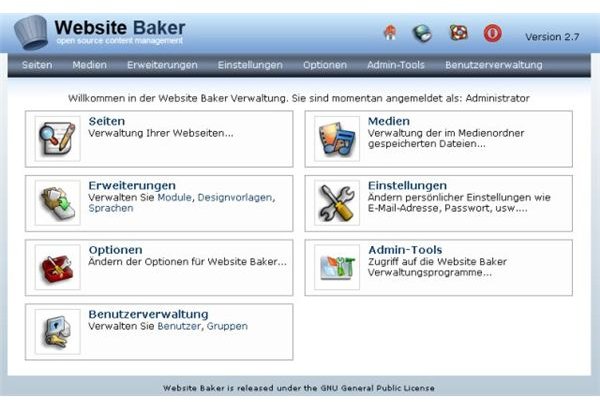What are the Major Content Management System Issues? Part 1 of 2
Content Management System (CMS) is a system that allows many people to contribute, store and share diverse data through a central repository. It consists of a collection of procedures that give users controlled access to data based on their roles, aimed at managing workflow in a collaborative environment.
Image Credit: Wikimedia Commons
1. Design
The top content management system issue concerns design. Anything done with a content management system is also doable without a content management system, and the sole purpose of establishing a Content Management System is to bring forth efficiency. This requires a simple and seamless design.
The best approach is to implement the system in stages, including the feature that adds most value initially, with each stage providing additional functionality from the previous ones, but introduced only after the previous stage remains fully integrated and works seamlessly.
2. Features
Another major content management system issue relates to the features in the system. Content management system features are many, but incorporation of irrelevant features or a complex structure invariably leads to an inefficient system that requires a lot of time and resource to manage, negating the purpose of establishing content management systems in the first place.
One classic case is the issue of multi-lingual support, the decision to invest in which depends on the scope of the business and the geographical location of content stakeholders.
3. Software Issues
Content Management Systems rely heavily on technology, and muddles in technology are a common issue with many content management systems.
Good content management software need to supports open data architectures, allow customization, provide flexibility, and require good support. Many content management systems however make the mistake of choosing software based on availability rather than suitability. This creates problems of suitability, adaptability, costs, and other issues.
The best approach when developing content management system is to avoid depending on a single technology and ensuring availability of multiple providers.
4. Migration and Integration
A major content management system issue is migration of data from the old system and integration of the system with the existing processes. Very often, migration of data to the content management structure creates technical challenges of format or compatibility. Very often, such challenges remain insurmountable and the data requires re-entry. Other times, the new system fails to adapt with the existing systems and processes.
5. Central Control
A good content management system decentralizes control of content to remove the bottlenecks that surround posting content to the web. This however comes at the cost of compromising quality, accuracy, and consistency of the content and cause contradictions and various content having diverse styles and formats.
Solutions include creating templates and reusable modules of information to fit inside such templates. Many content management systems provide tools for central editorial control, but successful utilization of this tool requires an editor who ensures a consistent tone, style, and structure across content.
Continue to page 2 for more content management system issues
6. Copyrighting

A content management system, by allowing everyone to contribute severely dents quality, for not all people are equal in writing or posting content. Someone who writes brilliantly with pen and paper many not necessarily adapt successfully for the electronic records that content management systems deal with.
The solution lies in good documentation, providing writers with a basic template for the content, and in providing training in writing for electronic medium, and instituting an editor to ensure quality and consistency.
Another major issue with content management systems is the users focusing on conveying information rather than meeting actual business needs. Most of the posts in content management systems tend to be descriptive and very few call to action.
Image Credit: flickr.com/Corey Leopold
7. Contributor Issues
Content management systems allow anybody to post content, but this does not mean that everyone who can post or should post content actually does so. Many content management systems go unused except by a few individuals for many reasons. Some people do not have the time to post content, some people do not want to take up the responsibility, and many others simply do not know how to use the system. The onus lies on the top management to delineate roles and responsibilities for the content, and provide adequate training for users. Without such initiatives, the scope of content management systems remains unfulfilled.
8. Bloated Systems
Another major content management issues is bloated systems. Allowing everyone to contribute leads to the system soon filling up with every sort of data, both relevant and irrelevant, and more the data available, the harder it becomes to search for the required data. Infusion of data also increased storage and maintenance costs.
Good content management systems prevent bloating by preempting its occurrence. This depends on the administrators instituting a policy that allows posting of only relevant and useful content, and undertaking periodic review of posted contents to remove irrelevant content.
9. Organizational Focus
Another content management issue is that it encourages information architecture built around organizational structure rather than users needs. Content Management systems build around organizational structure makes it easier for the administrators to divide responsibility for posting and updating content, but cause the content management system to become task focused instead of user focused or objective focused. The solution is to allocate permissions to users based on a per section basis, instead of organizing the content management system to mirror the internal organizational structure.
10. Underestimating Time and Costs
Underestimating time and cost is another major issue with content management systems. This becomes especially true when developing the content management system. After establishing the content management system, the major mistake made is underestimating the time it takes to create and post content.
Most content management system requires constant monitoring that takes away much of an organizations resources.
The success of content management systems depend on a proper understanding of the issues involved and acting appropriately on the organizational context.
